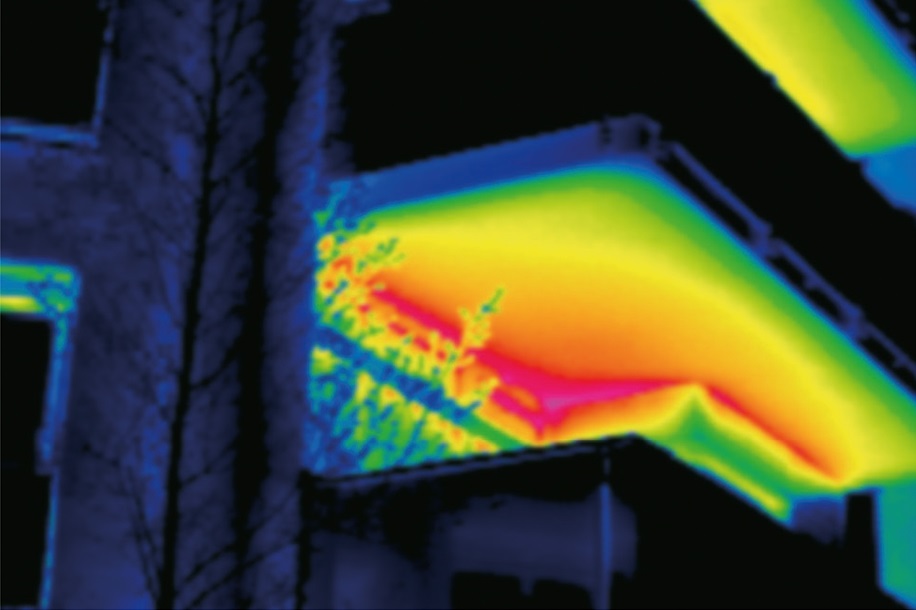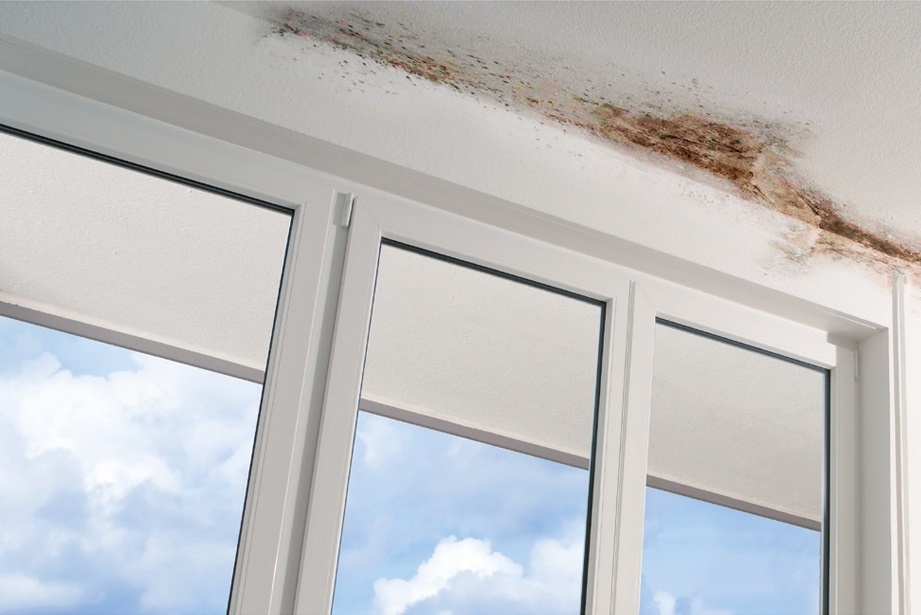Examples of structural thermal bridges
A structural thermal bridge may occur whenever you have a structural connection. In practice, structural connections often lead to high heat loss and low surface temperatures in the room. Condensation and mould formation can be caused by structural thermal bridges. The following images and examples show typical thermal bridges occurring in building envelopes.
In non-insulated cantilevered elements, such as balconies, the interaction between the geometric thermal bridge (cooling fin effect of the cantilever) and the material thermal bridge (penetrating the thermal insulation layer with reinforced concrete or steel) leads to significant heat loss, see Figure 5. Cantilevered balconies and exposed slab edges are considered the most critical thermal bridges in a building envelope. Non-insulated cantilevers cause severe heat loss and significantly reduce the internal surface temperature. As a result, the risk of mould growth greatly increases around the intersection of the interior slab and the exterior wall assembly, see Figure 6.

Figure 7: Continuous balcony slab compared with a solution with Schöck Isokorb®; Left: continuous balcony slab without thermal break, Right: Balcony slab thermally broken with Schöck Isokorb® providing a continuous insulation layer.
Figure 7 shows the modelled temperature distribution through a reinforced concrete balcony with and without a thermal break. The image on the left shows an unmitigated thermal bridge. The colour gradient shows how the heat flows to the outside through the balcony slab, from the warm red to the cold blue area. The image on the right depicts a thermally broken balcony connection. As the illustration shows, a load-bearing thermal insulation element significantly reduces heat loss and provides continuity in the insulation layer.
Linear Thermal Bridges
Linear thermal bridges are disturbances in the continuity of the thermal envelope that can occur along a certain length of the envelope. Typical examples of this include concrete balcony connections with the floor slab going through the wall, outer wall edges, floor supports and window to wall junctions. The energy losses incurred by a linear thermal bridge are quantified by the linear thermal transmittance ψ.

Figure 8a: Illustration of a linear thermal bridge on a linear balcony connection. The left side shows the warm interior with a red surface, while the cold exterior is shown in blue on the right. As the yellow and green spots in the interior corners show, the surface temperatures can drop quite significantly in these areas.
Point Thermal Bridges
Some thermal bridges can be characterized as singular or Point thermal bridges. They only occur in one spot. Typical examples include steel balconies, canopies, roof extensions, fastening elements, such as dowels or curtain wall supports and anchor bolts that penetrate the insulating layer. The energy losses incurred by point thermal bridges are quantified by the Point thermal transmittance χ.

Figure 9a: Illustration of a local thermal bridge on a point balcony connection. In this case, steel beams are connected to a concrete floor from the outside. The left side shows the warm interior with a red surface, while the cold exterior is shown in blue on the right. As the yellow and green spots in the interior corners show, the surface temperatures can drop quite significantly.
Figure 10 shows typical thermal bridging occuring in steel structures, such as canopies or roof extensions. The image on the left shows a steel beam penetrating the insulation layer. On the right is an infrared scan of this location revealing areas of higher temperatures and heat loss around the area of penetration.

Figure 10: Structural thermal bridging in steel structures.

Figure 11: Thermal bridging occuring at continuous steel beams.
Figure 11 shows the effects of thermal bridging occurring at a continuous steel beam. The picture on the left shows the potential damage of the adjacent assemblies created by cold interior surfaces and resultant condensation, while the image on the right shows the temperature distribution by an infrared scan.





